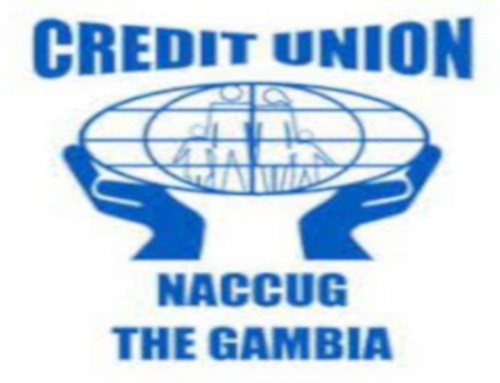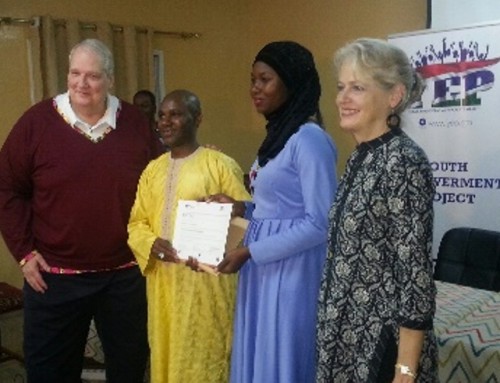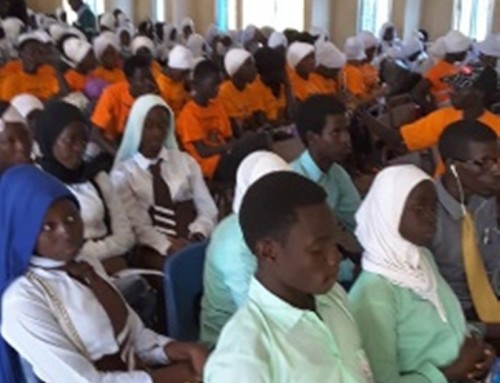
By Lamin Darboe
The president’s speech at the stadium on the occasion of the 53rd independence anniversary, gave us great comfort that something is being done to address the dismal infrastructural and economic sectors of the economy. The speech was well written and evinced well thought out policies which mapped out the strategic vision, goals and objectives expected to deliver socio-economic transformation of The Gambia. A transformation that will put our nation on a pedestal of sustainable economic development akin to the strides achieved by Rwanda within a short time. I hope and pray it is implemented successfully.
This is not the first time the leadership of The Gambia as a nation, visualised a strategic model to achieve socio-economic development. Under the Jawara regime, we had a rolling five-year development plans and at the peak of its administration, BB Dabo came up with his acclaimed Singapore Dream. A dream premised on public-private partnership and an avid commitment to achieve internal efficiency. Even under the dictatorial regime of Dr Yahya Jammeh, he managed to dream of a grandiose project of Vision 2020.
My desire is not to delve into the achievements and failures of the previous dreams or strategic projects, but to draw attention and summon the minds of our technocrats and bureaucrats, the major strategic operators who will inherently manage, monitor and control the national development plan or strategy.
The National Development Plan (NDP) is indeed a great strategic document, creative, feasible with attainable goals. What is motivating about it is that, it is an indigenous and organic project, not imposed by some external financial institution. It is therefore, our own construct, thus challenges the patriotism of Gambians to be vehicles of their development aspirations in many areas. It is indeed a challenging document that map out exactly its goals and objectives from strategic level of Government to the tactical level in the ministries and departments.
I mean from executive (cabinet) to government employees directly involved in the day-to-day activities. It also stated vividly what needed to be done and how it should be done. Succinctly, it mapped out clearly the: Why, What, How, When, Where.
WHY – the key question and goal that should capture aspirations and a focus, motivation and point of reference.
What – the goal, objectives and tactics.
How – how is the strategy going to be achieved, actors, performance measures/bench mark, resources, human finance, technology, IT.
When – time frame, performance measurement cycle, re-evaluation, review.
Where – control centres, who is who, who to report to who and reporting process and procedures.
Strategic concepts of development
plans, strategies and visions
There are varying thoughts in the academic world of business strategy and sciences of strategic graft delineated to strategy as a science and strategy as an art. Each I guess provide an insight, a perspective or even a personal experience.
First, the Chambers Dictionary which explained strategy as “knowledge ascertained by observation and experiment, critically tested. Systemised and brought under general principles.”
This explanation implies strategic grafting as a science underpinned by systematic approach,
a procedure, logical analysis and evaluation system…I surmise a feedback system based on the system of Closed and Open Loop System evaluation, Positive and negative feedback monitoring. These are concept which need further explanation however in my mind, my primary audience don’t need any exegesis on these concepts.
According to Mintzberg, (Rise and Fall of Strategic Planning), “…the basic premises of planning school of strategy is that… a strategic project must be controlled and as well as a formalised and elaborate, decomposed into distinct steps. Each delineated by checklist and supported by techniques.
A strategic project, vision, dream… as an art presupposes creativity, intuition, experience, flair and hunch… is ardently supported by other contemporary strategic thinkers…a chief proponent in the person of K Ohmae.
In his ubiquitous book, The Mind Of A Strategist, he propositioned: “In strategic thinking, one first seeks a clear understanding of the particular character of a situation and then make the fullest possible use of human brainpower to restructure the elements in the most advantageous way.”
The key is insight especially for a leader. President Barrow needs to have a “helicopter view” of the entire landscape of the NDP and if possible have access to an executive information system to drill down into the plethora of data or information on performance measurements, successes and bottlenecks in real time. If he cannot, he must have a monitoring team that will provide summary reports.
Strategy as an art herald creativity, partly intuitive. And often disruptive to the status quo which in my understanding is the key risk which the NDP will face, added to this risk is the intransigence, opposition and sabotage by still Yahya loyalists.
To conclude the theoretical concepts, let me state that the combination of the art and science of strategic plans or projects like NDP, is a difficult concept but one which has merit. Strategic development planning as a concept, seems, on the one hand to require an idiosyncratic mode of thinking (meaning inducing personal flair and experience), flexibility, adaptive systems and creative inputs, but on the other hands, sticking to the routine of policy and procedure, the determination and use of rules and regulation, risk profiles and science-based techniques like risk-based management.
Ohmae said, the two do not easily integrate and there is danger of one bourgeoning the other with too high premium being placed on creative input/thinking at the expense of reasoned analysis.
Marriage of concept and
practicalisation of NDP
One might be tempted to ask, why all these conceptual brouhaha? Concept is bedrock of rationalisation, provide understanding of different variables, provide a framework, coherence and identify scenarios and risk associated with a project, a plan or a vision.
Now let us see the sync between concept and reality in the light of our national development plan. Wielding grandiose concepts alone is insufficient without inducing practical narratives that matters in real world. They say between theory and practice is a similitude of chalk and cheese. This is because, phenomena and events in the real world do not always fit a linear model. Hence according to Ohmae, the most reliable means of dissecting a situation into its constituent parts and resembling them in a desired pattern is not a step-by-step methodology such as system analysis.
My thoughts on the NDP is not an academic review or an academic paper as some distractors might be spiced to lament. That would entail detailed review of nuts and bolts, the meat and bones, the evaluation of different ministerial strategies to obtain evidence of strategic fit. A strategic fit evaluation, will capture detail information on how a compartmentalised strategy like NDP, consisting of different compartments in form of ministries and departments gel together to provide a synchronised rhythm so that there is no consequential sub-optimisation. That is when different facets of the strategy work in a counterproductive fashion leading to failure just like Yaya Jammeh’s Vision 2020.
What caught my eye were the key success factors (KSFs) which were salient and properly carved out so that implementation has a clear outlook. The KSFs are the benchmarks to measure success of the plan over the period of the plan.
It is not a perfect document and I suspect it does not assume prefect implementation and 100% success.
In any project especially national projects, unforeseen problems, changes in the variables (economic, political, social) and bottlenecks should not be discounted. They should be factored in the original strategic model, alternative plans should be available, clearly documented and explained so that there is smooth re-orientation to prevent derailment of the overall plan.
This is akin to risk-based management where contingent plans are available to ameliorate the impact of unforeseen variables. First, potential risks and scenarios are produced and evaluated so that, in the event they happen, there is a clear and pragmatic course of action to address the problems.
Also important is sensitivity analyses which is part of risk evaluation. It tries to assess the impact of defined changes on the project goals and objectives. For example, what will be the impact of 10% shortfall in funding or say 5% shortfall in rainfall or tourist inflow?
Stakeholder involvement
The document need proper marketing to sell it to all stakeholders especially the people of the Gambia; not only to capture their imagination but to make them part of the plan. The fact that the plan was conceived and penned by the government technocracy however, by all manifestations indicates it is the people’s plan for socio-economic salvation. They should be part and parcel of it so that in the unlikely event of failure it is not seen as the government that failed but the whole country failed.
It should also be sold to civil servants of the individual ministries especially those who will be directly involved in the operationalisation and implementation.
Gambian intellectuals, especially those in the diaspora, should be engaged to be part of the plan, to own it, in some way to feel that they are valued partners in the implementation of the plan. That their inputs in term of ideas, skills and expertise, connections and other resources are critically needed and valued. It is noteworthy to state that, the diasporas remittances play a crucial role in providing much needed foreign currency, the sponsors of many local projects and perhaps the key stakeholders in many businesses in The Gambia, for example, building materials businesses.
The implementation committee which is officed at the Office of the President should cast their outlook far and wide by instituting a media presence that will provide timely and reliable information about the developments of the plan and invites views across the board. It is also important to have a discussion space or wall where people will exchange ideas or suggestions which can be mined to augments or adjust the plan to give it a renewed impetus.
There should be encouragement given to whistleblowers who can document and report about unhelpful activities, malfeasance, mal-administration if they strongly feel that is undermining the successful implementation.
This is quite sensitive and invariably require tactful management because our people have a natural penchant for rumour or ‘Radio Kankang’ which by default is devoid of evidence.
Project implementation is a marriage of art and science. A science would have specific parametres and strict modus operandi while an art presupposes flexible approach which factors a whole ranges of variables that can impact on a project. As an art, it encapsulates variables like the motivations, personalities, aspirations of operators. It factors the many combinations of alternative ways of achieving the same results albeit the most efficient, effective and economic actions.
Project planning and strategy espouse an art because projects as plans are human crafted and human operationalise therefore its success and failures are inherently influenced by vicissitudes and vulnerabilities in our life. Consequently, it requires excellent management skills to manoeuvre between contesting variables to achieve positives synergies; as the Rastafarian will put colourfully, the positive vibrations are positively channelled. In the same vein negative synergy or vibrations are monitored and enfeebled to minimise their impacts.
Lamin Darboe is a Gambian who lives and works in Leicester, England.
Article Views:
43





